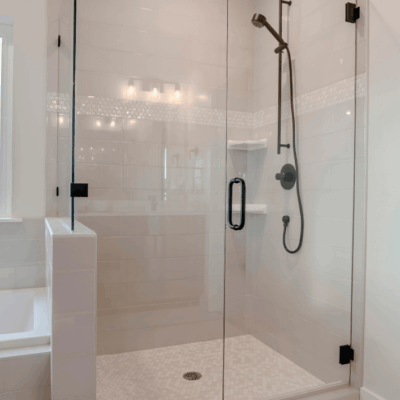So you’re thinking about adding a fireplace. Maybe to cozy up your living room. Maybe to bring some charm to your patio. Either way, you’re stuck on the big question: gas vs electric fireplace, which one’s better?
What’s the Basic Difference?
- A gas fireplace uses natural gas or propane. You get a real flame, real heat, and that campfire-like glow.
- An electric fireplace uses a heating coil and a screen to mimic flames. No actual fire, no chimney, no smoke.
Both can look great. Both can warm you up. But they work very differently, and that affects cost, heat, and everything else.
Heat Output: Which One Packs More Punch?
Here’s the truth: if you’re looking to heat a big space, a gas fireplace wins.
A natural gas fireplace or direct vent gas fireplace can kick out 20,000 to 40,000 BTUs. That’s enough to heat most living rooms—and then some. It’s steady, powerful heat, and it keeps going even if the power goes out. Big plus in the winter.
A modern electric fireplace usually gives around 4,000 to 5,000 BTUs. That’s enough to warm a bedroom, a den, or a small living area. It won’t heat your whole house—but it’s perfect for zone heating. Especially if your main system leaves one room always a little chilly.
Gas gives more heat, but electric gives you just enough for smaller spaces and it’s safer to touch if you’ve got little ones around.
Install & Setup: Which One’s Easier?
No contest here, electric fireplaces are way easier.
You just plug it in. That’s it. No venting. No gas lines. No permits.
A ventless gas fireplace is also fairly simple to install no chimney needed, but you still need a pro to hook it up and check for safety. A direct vent gas fireplace needs outside venting, which can mean cutting a hole through a wall or roof. Not a weekend DIY project.
So if you’re renting, living in a condo, or just want something quick and clean, go electric.
What About Costs—Now and Later?
-
Upfront Cost
Electric fireplaces can start as low as $200. Wall-mounted, insert-style, or even built into a TV stand.
Gas fireplaces? You’re looking at $2,000 to $5,000 for the unit and professional install. Maybe more for a direct vent system.
-
Running Costs
Now here’s the twist: natural gas is usually cheaper per hour than electricity. So while electric units are cheaper to install, they might cost more to run if you use them all the time.
But most folks don’t run their fireplace 10 hours a day, every day. You might only use it in the evenings. Or weekends. In that case, either one is affordable to run.
Still, if you want to heat a whole room consistently? Gas is more cost-effective long term.
Quick Look: Fireplace Comparison Table
|
Feature |
Gas Fireplace |
Electric Fireplace |
| Heat Output | High (20,000–40,000+ BTUs) | Moderate (up to ~5,000 BTUs) |
| Installation | Professional required | Plug-and-play |
| Upfront Cost | Higher ($2,000–$5,000+) | Lower ($200–$1,000) |
| Running Cost | Lower per hour | Slightly higher per hour |
| Maintenance | Needs annual service, cleaning | Minimal maintenance |
| Looks/Design | Real flames | Many styles, even flame colors |
| Safety | Hot to touch, needs caution | Cool-touch, safer for pets/kids |
| Backup Heat During Outages | Yes | No (requires electricity) |
Which Is Better for Your Space?
- Small apartment or condo? Go with a realistic electric fireplace. No need for venting, no fire risk, and it looks sharp.
- Large home with a central space that needs extra heat? A direct vent gas fireplace might be the best move. Reliable heat, adds home value, and works even in outages.
- Outdoor chill zone? Want to host friends on the patio? An outdoor gas fireplace brings the vibe with real flames. Want something simpler? An outdoor electric fireplace is cleaner and safer, just make sure it’s weather-rated.
Common Questions (People Ask These a Lot)
- Do electric fireplaces really heat a room?
Yep—if it’s a small or mid-size room. Not great for heating your whole home, but great for adding warmth right where you want it.
- Are gas fireplaces safe indoors?
Yes, especially ventless gas fireplaces that meet safety standards. But they still need carbon monoxide detectors and proper clearance.
- Do electric fireplaces look fake?
Some do. But a modern electric fireplace with LED tech and 3D logs? Pretty convincing. You might be surprised.
- What about smell and noise?
Gas fireplaces have a slight gas scent when turned on. Electric ones are silent or have a quiet fan. No crackle, though—unless it’s a sound effect!
So, Which One Wins?
If you’re all about high heat and traditional looks and don’t mind the install cost—gas fireplaces win for performance.
If you’re into flexibility, ease of use, and something safer and cheaper to set up, electric fireplaces are hard to beat.
Either one can make your space feel cozier, warmer, and more inviting. It all depends on your space, your needs, and your budget.
So take a breath, think about how you’ll really use it, and choose the one that fits your life, not just your living room.
Still deciding between a gas or electric fireplace?
Stop by one of our Godby Hearth & Home showrooms in Indianapolis or Carmel to see both in action. Whether you’re leaning toward a natural gas fireplace or checking out the latest realistic electric fireplace models, our team can help you compare your options side by side.
Schedule a consultation or just come in and feel the difference for yourself. Cozy comfort is closer than you think.





